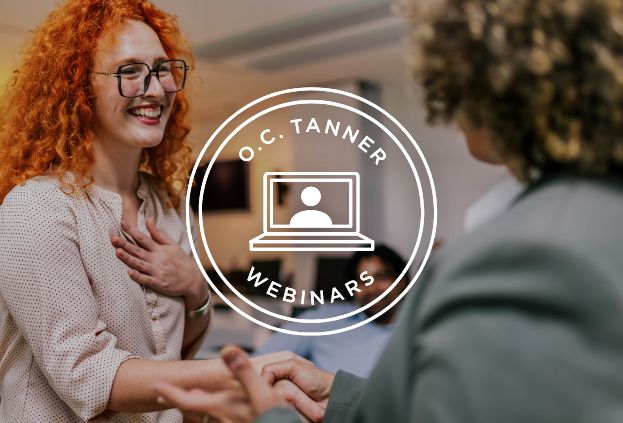Integrating Recognition and Culture After Mergers and Acquisitions

Updated on
March 12, 2025
12
March
2025
Mergers, acquisitions, and any type of restructuring can be a challenging time for organizations. If not done well, M&As can negatively impact company culture. But they are also an enormous opportunity to create a stronger company where employees can thrive. Consider these stats:
Cultural differences and changed operations account for almost 50% of M&As failing to meet expectations
75% of completed M&A integrations still have issues with culture that lead to program delays and employees leaving
54% of successful deal makers were able to manage cultural issues successfully (compared to only 9% of unsuccessful deal makers)
PWC finds “culture and change might turn out to be the largest barriers to a successful integration process”
In any M&A integration, neglecting to integrate culture programs like employee recognition can have devastating effects. That’s because recognition is one of the most effective ways to communicate what’s important. When you’re harmonizing different cultures into one, calling attention to what’s being done well can bring people together, create belonging, and help all employees feel appreciated, seen, and valued during times of change.
Recognition builds connection after an M&A
As M&As can often cause uncertainty and decreases in employee performance, having a robust, enterprise-wide recognition philosophy and approach can help counteract negative feelings and build positive momentum to move forward. Employee recognition can connect employees after a merger, acquisition, or restructuring—connecting people to both the newly integrated organization’s purpose, values, and culture, and to their peers. It communicates and reinforces what behaviors and contributions are important to the new organization, and the role of employees in making that new organization successful.
Recognition is a powerful way to bring everyone together and strengthen company culture. Organizations with integrated recognition have higher employee engagement, employee retention, and a more inclusive, connected work environment.
Taking a thoughtful approach to how you unify, bridge, and rebuild employee recognition at your organization is a crucial part of the M&A integration process. With so many changes during an M&A, employees can be rattled by even the small ones. Rewards and recognition are an important aspect of the workplace to employees, and how you handle those changes is something they will always remember.

6 Tips for unifying employee recognition after an M&A
Here are a few things to consider when bringing together employee recognition programs after an M&A:
1. Be clear on intention and goals
Companies should begin with clearly defined goals for recognition and create a strategy that uses it to build a stronger future for the organization. The M&A integration process itself can be used to improve cultural alignment of things like purpose, values, and behaviors.
Use research and best practices from culture experts to inform specific goals for employee recognition or hire a culture consultant to help you shape them. Think about what recognition will be meaningful and accessible to all employees (regardless of the organization they came from, level, type, or location).

2. Define and align behaviors
SHRM finds cultural alignment to be the top challenge in M&A transactions—integrating and redefining culture and corporate values is an essential part of the process.
Organizations must come up with a shared vision, purpose, and values that all employees can connect to. Reward and recognize the behaviors you want to encourage in the new culture you are building, and use consistent messaging aligning your recognition approach to it.

3. Assess current recognition practices
Conduct an assessment of current recognition practices to understand what recognition is happening across the organizations. What is working well? What type of recognition is most meaningful and impactful to employees? Where are there gaps? Then use this information to create a framework to aid in integrating your recognition solutions.
If both organizations have their own robust corporate recognition solution, use your framework or consultant to evaluate them and determine which aspects to merge and migrate. Be sure to communicate to employees why you made your decision. If neither organization has a comprehensive program, you’ll want to find a partner to create a new one.
See tips to consolidate multiple employee recognition programs
4. Infuse empathy into your change plan
Make sure you have a comprehensive change management plan that is built on empathy and accounts for employees’ emotions during a stressful time. Help them understand the changes and give them a voice, when possible, in how those changes are made.
Communicate regularly about recognition changes, define how they are aligned with the integrated organization’s purpose and values, and listen to (and act on) employee concerns and feedback about any new policies or processes.

5. Build leadership support
Ensure you have senior leader support for cultural integration. This includes time, budget, and resources, but also their involvement. Have leaders of both companies promote your new consolidated recognition approach and invite senior leaders to model giving recognition through it.
A united front towards employee recognition not only demonstrates successful integration of company cultures, but also the importance of employee recognition to the new organization.
A whopping 60% of acquirers regretted not dedicating more resources to culture and change management during the integration process.
6. Engage recognition champions
Invite groups of employees that represent their peers throughout the organization to promote and model the new recognition approach. Include employees from both organizations and all types of business units. These can be hand-picked by leaders or be employees who volunteer for the role.
Recognition champions can provide guidance on how and what to recognize. Be sure to recognize and show appreciation to your champions for their extra work in these efforts.
Read how GE Appliances created a more meaningful recognition solution for their people after going through an acquisition.
See how O.C. Tanner’s Culture Consultants can help you rebuild recognition after a merger or acquisition.
A research analyst with nearly 20 years’ experience, Christina uncovers employee perceptions and writes about the trends, insights, and best practices that create workplace cultures where people thrive. She uses her background in conducting and publishing primary research to tap into what the data says and why it matters to modern leaders. Christina has a bachelor’s in sociology from the University of Michigan and a master’s in marketing from Northwestern University.
A research analyst with nearly 20 years’ experience, Christina uncovers employee perceptions and writes about the trends, insights, and best practices that create workplace cultures where people thrive. She uses her background in conducting and publishing primary research to tap into what the data says and why it matters to modern leaders. Christina has a bachelor’s in sociology from the University of Michigan and a master’s in marketing from Northwestern University.
A research analyst with nearly 20 years’ experience, Christina uncovers employee perceptions and writes about the trends, insights, and best practices that create workplace cultures where people thrive. She uses her background in conducting and publishing primary research to tap into what the data says and why it matters to modern leaders. Christina has a bachelor’s in sociology from the University of Michigan and a master’s in marketing from Northwestern University.




